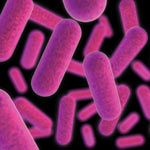HIV/AIDS has been in Australia for more than 21 years, and the costs have been high. By the end of 2003, more than 6370 Australians had died and a further 13,600 were living with HIV infection.
What is HIV?
HIV stands for the human immunodeficiency virus. HIV is a virus that lives and reproduces in the human body. Over time, HIV destroys part of the immune system and renders it ineffective. When the immune system is sufficiently depleted it can no longer overcome infections, illnesses and some cancers. HIV is infectious and can be transmitted from one person to another.
What is AIDS?
When a person contracts two HIV illnesses simultaneously, they are usually given an AIDS diagnosis. AIDS stands for acquired immune deficiency syndrome. AIDS is the disease state that can be caused by living with HIV. You cannot “catch” AIDS; only HIV can be transmitted from one person to another.
How is HIV passed from one person to another?
HIV can be transmitted from one person to another by the exchange of certain body fluids. Body fluids that can carry enough HIV to be infectious are: blood (including menstrual blood); vaginal fluids; breast milk and semen.
Activities that can put you at risk are sharing injecting, piercing or tattooing equipment;
unprotected penetrative sex (anal or vaginal); unprotected oral sex; and HIV-positive mother-to-child transmission, either before or during birth or through breast-feeding.
World AIDS Day
World AIDS Day will be commemorated around the globe on December 1, 2004. It celebrates progress made in the battle against the epidemic, and reminds us of the many challenges that remain.
This year, World AIDS Day will focus on women and girls, HIV and AIDS. This is because women make up an increasing proportion of adults living with HIV. All over the world, women still do not enjoy the same rights and access to employment, property and education as men. Women and girls are also more likely to face sexual violence. This makes them more vulnerable to HIV and, as the primary care-givers, to the impact of AIDS.
What about in Australia?
Non-Indigenous women made up about 10 per cent of new diagnoses at the end of 2003, but Indigenous women made up almost 34 per cent of new diagnoses in the Indigenous population.
What can I do?
Never share needles when injecting drugs, and always use a condom when having sex. It may feel uncomfortable to talk to your partner about safer sex. If you are unsure of what to say, talk to your GP, your local Aboriginal Medical Service or even just someone you trust about how to approach the subject in a positive way. Remember: no condom, no sex.
You should also ensure that you have a sexual health check-up every six to 12 months.
Further information can be obtained from www.worldAIDSday.org.au or by contacting your local AIDS Council or local Aboriginal Medical Service.






Comments are closed.